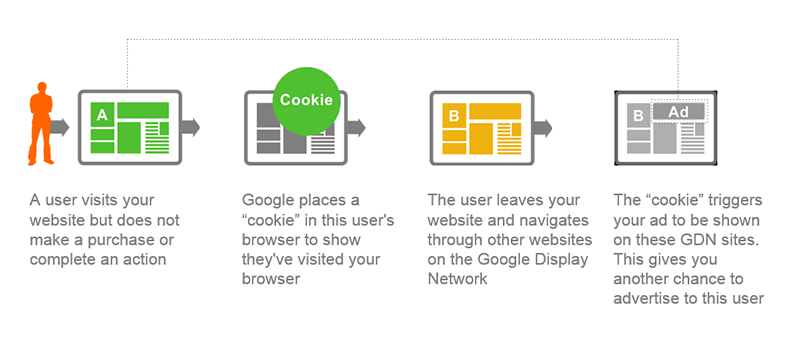Explore our NEW Knowledge Base and Help Desk to find everything you need to attract, engage and convert talent with your Vennture website.
Discover MoreExploring Display and Remarketing
23 Jul, 20142 minutes
So far I've looked at the basics of PPC and SEO but now it’s time to look into Google’s Display Network and what it can do for you.
With users spending hours of their day online and 95% of that on content sites, it’s important to advertise online. If you don’t, you’re just capping yourself and stunting the growth of your business. PPC focuses on the paid search network and display campaigns, which utilise the Google Display network or GDN, to spread adverts across the web.
The GDN is a network of websites with advertising space open to those who use AdWords. Along with the use of precise targeting to reach engaged audiences, the GDN is a simple, cost-effective way to advertise on millions of high quality news pages, topic specific websites, video sites and blogs…as long as they’re part of the Display Network.
Why choose to use the Google Display Network
If you chose to opt into the GDN you can choose exactly where you want your ads to appear, on major news sites or niche communities related to your product or service. You can also engage with users who are using different formats online such as text, video or rich media ads and with all of this you can also choose a pricing model that suits your goals, such as pay per click or pay per thousand impressions.
Display advertising allows you to get clear reporting on the different aspects of your campaign, enabling you to decide which adverts are working and which ones are dragging you down. On top of all of these benefits that can make your campaign lift off, you can also combine search ads with your display campaign to maximise your conversion potential against using search campaigns alone.
Mobile Ads
This all sounds divine so far, doesn't it? Being able to target your demographic and use display ads in conjunction with your search ads, but what about those who aren't at their computers? Are they left out of this browsing wonderment? No, in fact they are a huge part of the audience that the GDN reaches. Users spend on average 7 hours a day consuming media and of that 1.8 are spent on a mobile device - the most out of any medium.
With the Display Network you can make sure that when users are browsing their favourite sites they will see your adverts. Once you've created an ad you can choose to show it on a mobile device such as a smartphone or tablet and on top of this you can also create image ads for WAP-enabled devices, which usually have a smaller screen. This way, everyone can be reached by your adverts and they too can become valued customers.
Targeting
While the finished product sounds amazing and may seem like a dream, you do still have to target the right demographic. Your ads can’t fulfil their full potential and grab the sales that you need without this. There are two ways that Google has configured the targeting:
Contextual Targeting: Where you are automatically placed depending on the likes and dislikes of a user:
- Topic Targeting: you can choose from over 1700 site categories already organised for you by Google.
- Keyword contextual targeting: Grab the keywords you want and Google will score itself to find the best sites for your display ads.
- Placement targeting: If you want the added precision of doing it yourself you can manually select the right placements for the campaign.
Audience Targeting: You can also target your audience based on their interests, demographics or through marketing. You can also use Google’s look-a-like technology to find consumers with similar browsing habits to people on your remarketing list:
- Interest category marketing: aim your ads based on what users like.
- Demographic: place your ads based on their gender and age.
- Similar users: Use Google’s look-a-like technology to find users similar to those already on your list.
- Remarketing: This allows you to reach those who have visited your site in the past and tailor your messages based upon their interest.
Remarketing Fun Times
When you browse any website you may have realised that the next few websites that you visit will show ads similar to what you were just looking at or (spookily) they will show exactly what you were just looking at! But fear not, this isn't a spy sitting on a computer trying to sell you something, this is remarketing.
By using this, the Google Display Network enables you to engage with those who have recently visited your site, but not performed a desired action. Your ad will be shown if you win the ad auction (just like search ads, covered in a previous post on PPC) and finally for each new site a user visits they may be served your ad again- reminding them of just how good your business is as they continue through the web.
But how does it work?
Remarketing is a neat tool to use to try and reengage with past visitors. It uses a cookie to trigger the ads on any site you visit that is in the GDN, but this cookie isn't sweet and chocolaty, oh no. This cookie enables your ads to follow previous visitors and provide them with an ad you have created.

As with display and search marketing, there are CPM and CPC pricing models which can be used within remarketing:
- CPM: Cost-per-thousand impressions which means that you only have to pay when your ad appears 1,000 times. This is great for campaigns aimed at increasing visibility or to track metrics such as impressions, reach, frequency and search uplift.
- CPC: Cost-per-click, meaning that you only have to pay when your ad is clicked and a user visits your site. This is very beneficial for you if you care about your campaign getting clicks and your site getting visits but it also allows you to track metrics such as sales, leads and sign ups.
Display Marketing is a great tool as it allows you to reach your ideal customer on the sites they regularly visit and gives you a better chance to convert them into loyal, repeat customers.



